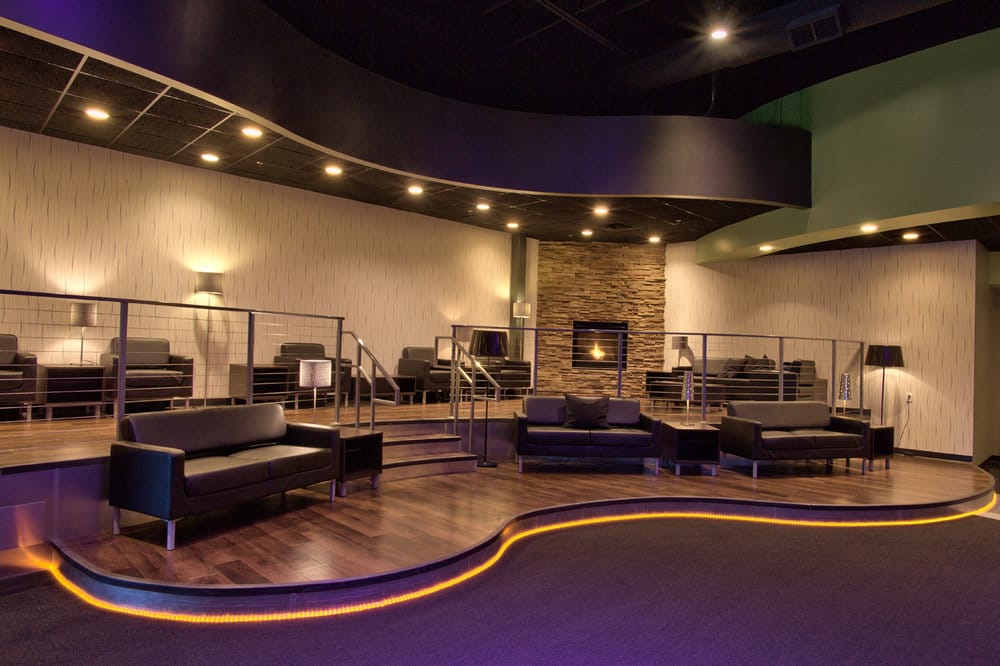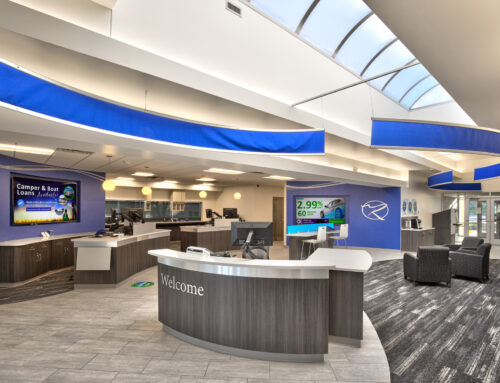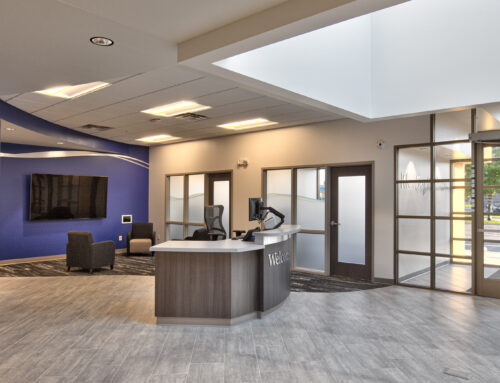As architects, our goals reside in combining the aesthetic with the practical, meeting the client’s goals, and bringing to fruition their vision of the building. One of the major aspects of accomplishing this comes when it is time to plan the church interior design. From color schemes to space proportions, we are eager to craft an interior that welcomes admirers and worshipers alike. Churches have some very distinct needs when it comes to designing your interior. Here are some considerations unique to the craft:
Use materials and textures to create a space within a space
For example, in places where furniture is gathered around a fireplace with walking spaces around, and then another set of furniture is set in a manner for private reading, this is a space within a space. Architects use changes in flooring material, ceiling material or heights, and paint to create a separate “room” without creating walls. Architects also raise flooring, creating raised lounge spaces, or we lower the ceiling in an open space to create a sense of a smaller room without closing it off
Avoid choosing a favorite element and matching everything else to it
Instead, choose a color scheme and find elements that fall into that color scheme. Starting with the general and ending with the specific will make the interior design process a much less stressful experience.
While it can be tempting to choose carpet and flooring based solely on aesthetics, you have to consider the long-term implications of your choice
If the carpet you choose is not intended for high traffic, you will be left with discolored walking patterns in your flooring, especially in worship and lobby spaces. Durability does not mean an eyesore – you do not have to choose between function and beauty today. There are now many durable and beautiful products. Your architect will know these.
When choosing furniture, ask yourself if you would rather save money or create an interior that is perfectly coordinated
Often, members of the fellowship and the community are willing to donate furniture items, such as couches and chairs, to their church. While it can definitely save you money, it may detract from your overall theme or scheme.
Choose flexibility
Create spaces that have multi-purpose use and openness. In doing so, you can be flexible in furniture, layout, and function of a room. The church is the community’s gathering place, and you can increase attendance if you can offer additional ministries with flexible fellowship spaces.
Learn to love your white space
While it can be tempting to place as much art and furniture in a room as possible, it can be far more effective to use a few statement pieces and let them do the talking. Placing too much on the walls and doors can make your space cluttered and draw away from the focus of the room: worship and fellowship.
Your church building will be one of the first things that people see when they visit your church. Using proper interior design methods can help make that impression positive.





